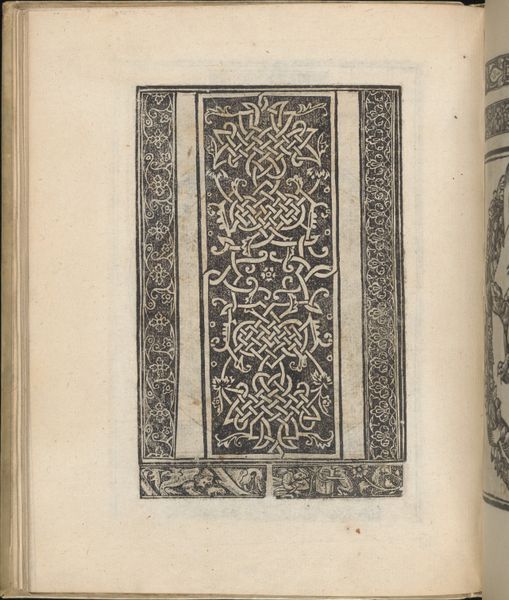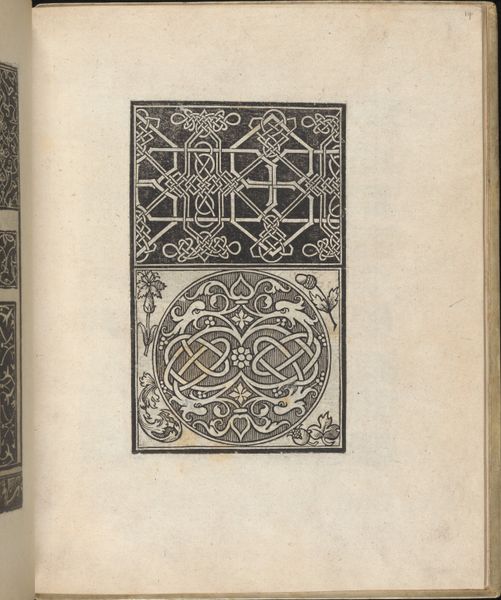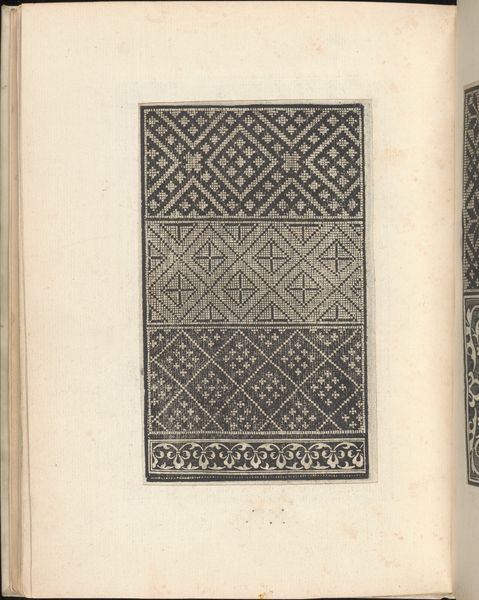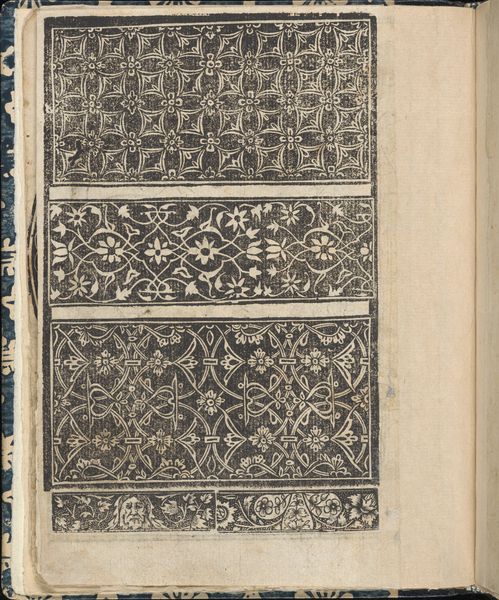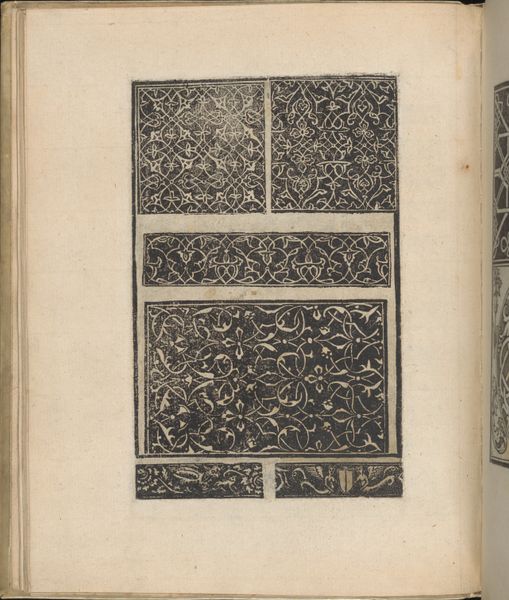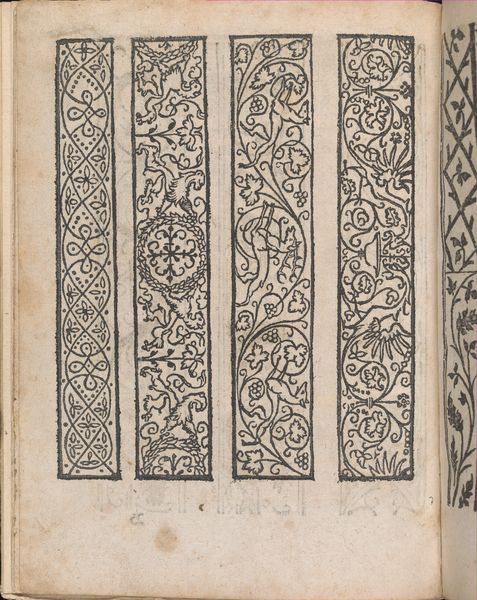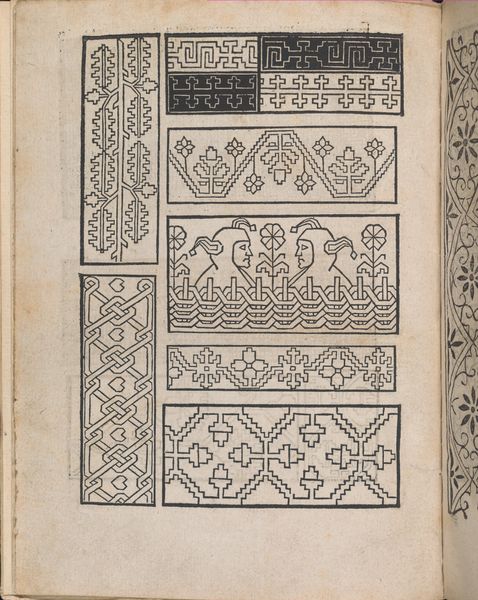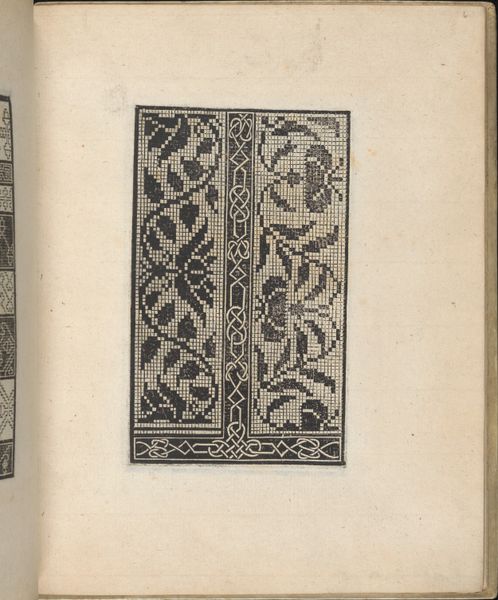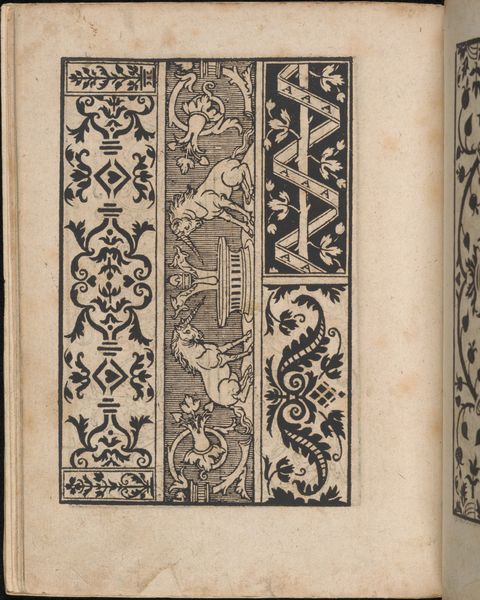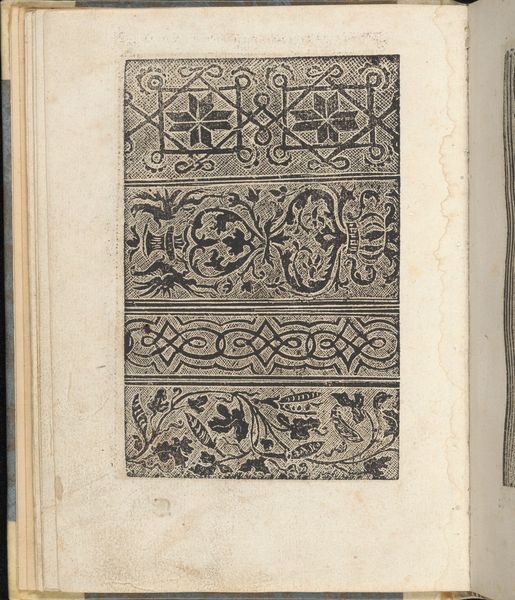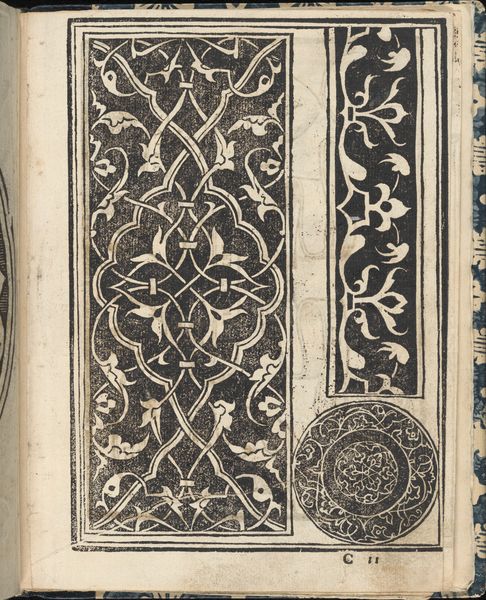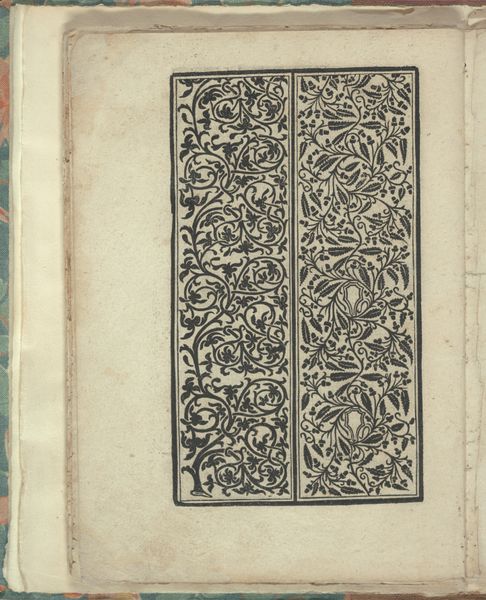
drawing, graphic-art, ornament, print, engraving
#
drawing
#
graphic-art
#
ornament
#
medieval
# print
#
book
#
geometric
#
line
#
engraving
Dimensions: Overall: 9 13/16 x 7 7/8 in. (25 x 20 cm)
Copyright: Public Domain
Curator: This engraving, "Trionfo Di Virtu. Libro Novo..., page 8 (recto)" created by Matteo Pagano in 1563, comes to us from a time when the printing press was transforming European society. It represents not just art, but access to knowledge. Editor: The intricacy is the immediate draw, wouldn't you agree? There's a mesmerizing, almost hypnotic quality to the tightly woven patterns, especially the stark contrast between the ink and the paper. Curator: Precisely. It’s part of a book of patterns, intended to be used as inspiration for other artisans. The level of detail serves a direct practical purpose, influencing the design of textiles, ceramics, and other decorative arts. Dissemination through print democratized these artistic concepts. Editor: It’s incredible how Pagano manages to keep it balanced and organized. The book design with a rigid top and bottom and vertical registers offer variations within set confines. There is no part that feels underdeveloped. Curator: I find myself thinking about the social implications – artisans were no longer solely reliant on direct apprenticeships or access to wealthy patrons to gain insight. They could acquire it independently, leading to a change of artistic development in workshops of all sizes. Editor: Absolutely. Beyond its historical and cultural impact, I keep coming back to how powerfully these fundamental visual components shape the work. The negative space almost dances around the heavier marks. Curator: And what appears now to be basic geometry served a significant role in empowering tradespeople of the period and offering them a new creative language. It’s interesting how one can uncover layers of society through an artist's book like this one. Editor: It does make you consider the weight of each stroke, each deliberate placement. The final layout results in what could be the earliest conceptual manual, so concerned with its own physical form. Curator: So while "Trionfo Di Virtu" might seem like a humble collection of designs, its creation and distribution through printing presses fostered creativity, and spurred novel conversations that continue to this day. Editor: Agreed. And to consider the artwork itself and reflect on this printmaking, this relic, one is awed by a geometric exploration that offers beauty and harmony in lines.
Comments
No comments
Be the first to comment and join the conversation on the ultimate creative platform.
